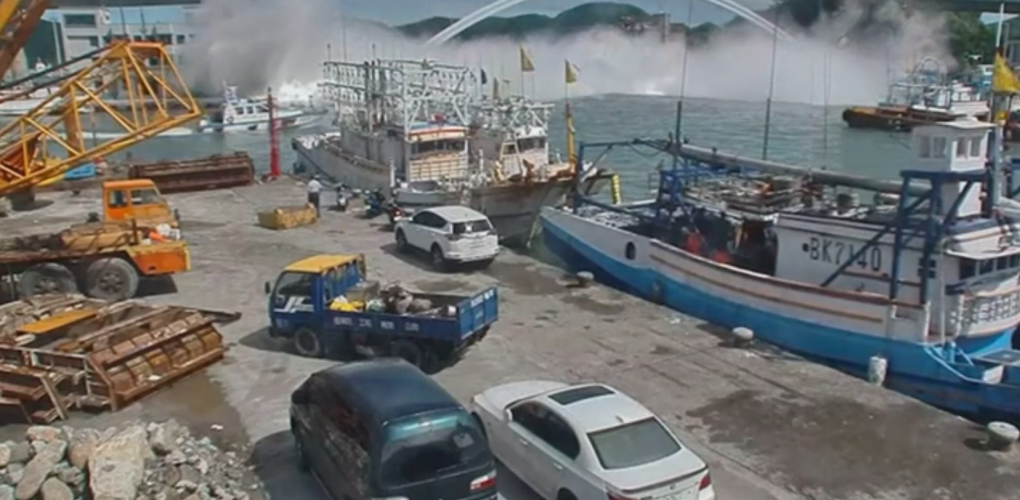The recent Nanfang’ao bridge collapse in Taiwan, along with the closing of the Hammersmith bridge in London and the earlier failure of the Polcevera viaduct in Genoa, Italy, should be viewed as warning signs to officials in the United States. They represent what can happen when adequate funding for bridge maintenance and replacement efforts isn’t provided by government agencies
When the Nanfang’ao bridge, a single arch suspension structure, collapsed last month, it crushed fishing boats below it, resulted in the deaths of six people, and caused injuries to dozens more. The Morandi bridge failure resulted in 43 deaths, many injuries, significant collateral damage, and long-term economic impact. The closing of the Hammersmith Bridge has not lead to extreme consequences, like deaths and injuries, but it has had an impact on traffic, communities, and businesses in the area surrounding it.
Experts are investigating the exact cause of the Nanfang’ao collapse. Most believe deterioration of the suspension cables and related components because of exposure to salt water was a significant contributing factor. The reasons currently cited for the Morandi failure and Hammersmith closure point to similar upkeep issues. Across the globe and in the U.S., the condition of many bridges is declining bit -by -bit, component -by -component, because of inadequate maintenance.
At the time of its collapse, the Nanfang’ao bridge was only two decades old. However, it had already showed signs of experienced significant problems, including warped, damaged, and sagging expansion joints that were repaired just three years ago.
Experts have viewed videos of the Nanfang’ao collapse, and most agree that the arch and deck seemed to hold up through most of the failure. They believe that damage to the tension hangers seemed to cause the cables to fail, one by one, starting with those at the most vulnerable parts of the bridge.
Investigations into the reasons for the failure of the Polcevera viaduct continue. However, there have been reports of significant corrosion in the main stay cables, which could have weakened critical structural components of the viaduct.
Similarly, corrosion and inadequate maintenance contributed to the closure of the Hammersmith Bridge, a 130- year- old suspension structure, earlier this year. Officials have closely monitored its condition since 2015, when sensors were added and weekly safety checks implemented. Both have been used to determine whether the stresses on the bridge were leading to structural damage. The ongoing monitoring discovered that the bridge’s bearings had seized up because of corrosion, which affected the structure’s flexibility. Officials believe the cost to return it to working order could be more than $150 million.
Historically, bridges tended to fail during the construction process or shortly after, because of design, structural, environmental, or construction flaws. Today, it’s more likely that they fail many years or decades after after they go into service. The change is due to a number of factors, including positive ones like better design, enhanced testing, improved construction capabilities, and more rigorous inspections. However, the biggest factor is the negative impact of poor bridge maintenance.
According to a recent report from the American Road and Transportation Builders Association, a group advocating for higher levels of investment in transportation infrastructure, there are currently more than 54,000 bridges in the United States that must be repaired or replaced. The association uses data from the Federal Highway Administration to compile the report.
Specifically, it found that:
-
- There are 612,677 bridges in the United States.
- Of them, 54,259 are in structurally deficient condition.
- For a bridge to be structurally deficient, one of its major structural components must measure four or below on a scale of zero to nine, with a nine representing bridges in excellent condition. Being structurally deficient does not necessarily mean that a viaduct is unsafe, but it reflects a need for critical repairs.
- Taking all this into account shows that almost 9%nine percent of all bridges in the U.S. are deficient. This includes famous and well-travelled ones like the Arlington Memorial Bridge in Washington and the Brooklyn Bridge in New York.
- Based on this, Americans cross structurally deficient bridges almost 175 million times each day.
Add to this the fact that almost one out of four U.S. bridges that are more than 50 years old and have reached the end of their design lives. Include the additional 15% percent between the ages of 40 and 49 that are close to aging out, and you start to see the vast scope of the issue in the U.S. (These numbers are from the latest Infrastructure Report Card from the American Society of Civil Engineers.)
The American Road and Transportation Builders Association report found that the states with the highest number of defective bridges are:
- Iowa.
- Pennsylvania.
- Oklahoma.
- Missouri.
The Nanfang’ao, Hammersmith, and Polcevera bridges in Europe point to why repairing the deficiencies in U.S. bridges is critical. Deteriorating bridges can lead to:
- Failures, deaths, and injuries.
- Closures, which means there’s limited access for vehicles and cargo trucks.
- Traffic bottlenecks .
- Reduced productivity and increased use of fuel.
Unfortunately, there is no specific legislation or government plan in place to address this issue. It’s critical that people working in the bridge industry advocate for this funding in order to keep the structures they manage and work on safe and functioning, and maintain the reputation of the industry.

